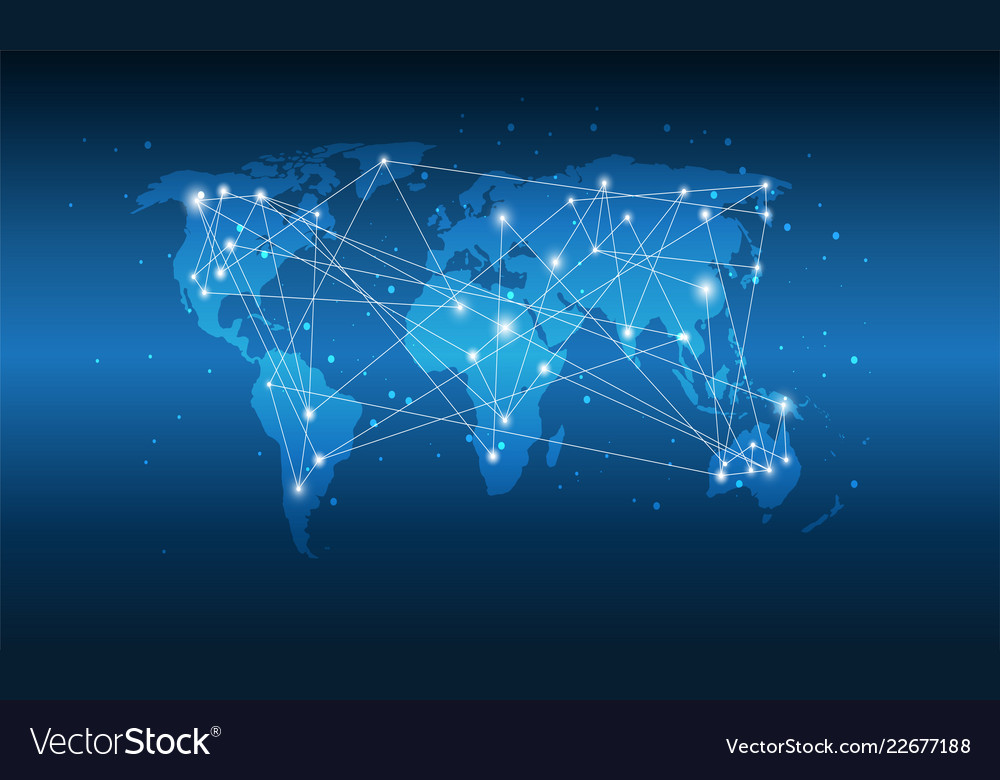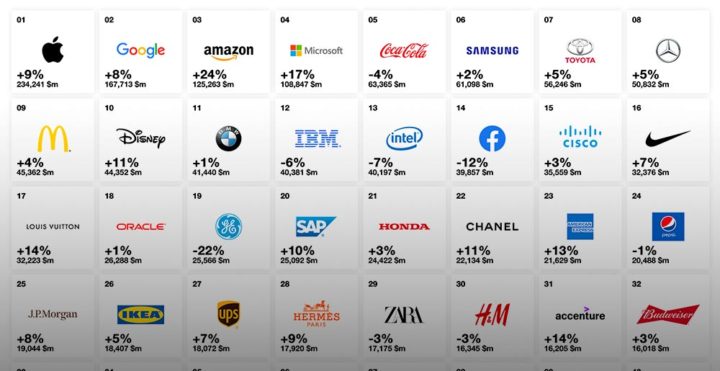Mapping Technology: A Visual Guide to Innovation
Map of technology, at its core, is a powerful tool for visualizing the complex and ever-evolving landscape of technological advancements. It’s a visual representation that helps us navigate the intricate […]

Map of technology, at its core, is a powerful tool for visualizing the complex and ever-evolving landscape of technological advancements. It’s a visual representation that helps us navigate the intricate web of technologies, understand their connections, and anticipate future trends.
From the early days of simple diagrams to today’s interactive and data-rich visualizations, technology maps have evolved to provide a comprehensive overview of the technological ecosystem. They serve as a compass for strategic planning, research and development, investment analysis, and even education and training.
Applications of Technology Maps
Technology maps are powerful tools that offer a comprehensive visual representation of technological landscapes. They provide insights into emerging trends, key players, and potential disruptions within specific industries or domains. These maps are valuable for various applications, enabling informed decision-making and strategic planning across diverse sectors.
Strategic Planning
Technology maps are essential for organizations seeking to understand industry trends, identify growth opportunities, and make informed strategic decisions. By visualizing the technological landscape, companies can gain a clear picture of:
- Emerging Technologies: Identifying new technologies with the potential to disrupt existing markets or create new ones. For example, a technology map could highlight the emergence of artificial intelligence (AI) in the healthcare industry, revealing opportunities for developing AI-powered diagnostic tools or personalized treatment plans.
- Competitive Landscape: Analyzing the strengths and weaknesses of competitors, identifying potential partnerships, and understanding the competitive dynamics within a specific industry. For instance, a technology map could reveal the leading players in the electric vehicle market, their respective strengths, and potential areas for collaboration or competition.
- Future Trends: Anticipating future technological advancements and their potential impact on the industry. For example, a technology map could predict the rise of quantum computing and its implications for drug discovery, materials science, and financial modeling.
Research and Development
Technology maps are valuable tools for research and development (R&D) teams, enabling them to explore new technologies, foster innovation, and develop new products or services. These maps can help R&D teams:
- Identify Research Gaps: Identifying areas where further research is needed to address specific challenges or explore new possibilities. For example, a technology map could reveal gaps in the development of sustainable energy solutions, prompting research into new technologies like fusion power or advanced solar energy systems.
- Explore Emerging Technologies: Discovering and evaluating promising technologies that could be integrated into existing products or services or serve as the foundation for new innovations. For example, a technology map could guide R&D teams towards exploring the potential of blockchain technology for secure data management or decentralized finance.
- Develop New Products and Services: Leveraging insights from technology maps to develop innovative products or services that address market needs and capitalize on emerging trends. For example, a technology map could inspire the creation of new medical devices that integrate AI for personalized diagnostics or smart home systems that leverage the Internet of Things (IoT) for enhanced connectivity and automation.
Investment Analysis, Map of technology
Technology maps are valuable for investors seeking to evaluate investment opportunities, identify promising startups, and allocate resources effectively. These maps can help investors:
- Identify Emerging Markets: Identifying industries or sectors with high growth potential driven by technological advancements. For example, a technology map could highlight the rise of the metaverse, a virtual reality environment with significant potential for investment in gaming, social media, and e-commerce.
- Evaluate Investment Opportunities: Assessing the viability and potential return on investment for startups or companies operating in specific technological domains. For example, a technology map could help investors analyze the prospects of startups developing artificial intelligence-powered solutions for cybersecurity or autonomous vehicles.
- Allocate Resources Strategically: Making informed decisions about where to allocate resources based on the potential impact and growth trajectory of specific technologies. For example, a technology map could guide investors towards investing in renewable energy technologies, considering their long-term potential for reducing carbon emissions and mitigating climate change.
Education and Training
Technology maps serve as valuable educational tools, providing a visual framework for understanding complex technological concepts and fostering a deeper understanding of the interconnectedness of various technologies. These maps can:
- Visualize Technological Concepts: Presenting complex technological concepts in a clear and concise manner, making them more accessible and understandable for students or professionals. For example, a technology map could illustrate the relationship between cloud computing, big data analytics, and artificial intelligence, highlighting their interconnectedness and potential applications.
- Promote Interdisciplinary Learning: Encouraging the exploration of how different technologies interact and influence each other, fostering interdisciplinary learning and understanding. For example, a technology map could demonstrate the convergence of biotechnology, nanotechnology, and information technology, showcasing their potential for revolutionizing healthcare and other industries.
- Develop Technological Literacy: Helping individuals develop a better understanding of the technological landscape and its impact on society, fostering technological literacy and informed decision-making. For example, a technology map could illustrate the evolution of the internet, its impact on communication, commerce, and social interactions, and its potential for future development.
Challenges and Future Directions
While technology maps offer a valuable framework for understanding and navigating the complex landscape of technological innovation, several challenges need to be addressed to ensure their effectiveness and continued relevance. These challenges relate to the accuracy and completeness of data, the management of complex relationships, and the effective communication of information to diverse audiences.
Data Accuracy and Completeness
Ensuring the reliability and currency of information is crucial for the credibility and usefulness of technology maps. The dynamic nature of technology necessitates ongoing data updates and validation.
- Data Collection and Validation: Establishing robust processes for data collection, verification, and ongoing maintenance is essential. This may involve collaboration with industry experts, research institutions, and technology providers.
- Data Sources and Quality: Relying on multiple and diverse data sources can help mitigate bias and improve data accuracy.
- Data Governance and Transparency: Implementing clear data governance policies, including data ownership, access control, and versioning, promotes transparency and accountability.
Complexity and Scalability
Technology maps often involve managing vast amounts of data and complex relationships between technologies, presenting challenges for scalability and maintenance.
- Data Management and Storage: Efficient data management systems are needed to handle large datasets, ensuring accessibility, security, and efficient retrieval.
- Data Visualization and Representation: Clear and intuitive visualization techniques are essential to present complex relationships between technologies in a comprehensible manner.
- Dynamic Updates and Maintenance: Maintaining the accuracy and relevance of technology maps requires a continuous process of updating and refining data as technologies evolve.
Interpretation and Communication
Making technology map information accessible and understandable to diverse audiences, including researchers, policymakers, and industry stakeholders, is crucial for its impact.
- User Interface and Navigation: Designing user-friendly interfaces and navigation tools allows users to easily explore and interact with the map data.
- Data Interpretation and Analysis: Providing context and insights into the data can help users understand the implications and potential applications of technologies.
- Communication and Dissemination: Effective communication strategies, such as interactive visualizations, reports, and presentations, are needed to effectively disseminate the insights derived from technology maps.
Integration with Artificial Intelligence (AI)
AI can significantly enhance the creation, maintenance, and analysis of technology maps by automating data collection, analysis, and visualization.
- Automated Data Collection: AI algorithms can be used to extract data from diverse sources, such as research papers, patents, and news articles, reducing manual effort and improving data completeness.
- AI-Powered Analysis: AI can analyze large datasets to identify patterns, trends, and relationships between technologies, providing valuable insights for decision-making.
- Interactive Visualization: AI-driven visualization tools can create dynamic and interactive maps that allow users to explore data in real-time and generate customized insights.
Enhanced Interactivity
Creating dynamic and interactive maps that allow users to explore data in real-time can significantly enhance user engagement and understanding.
- Interactive Filters and Search: Allowing users to filter data based on specific criteria, such as technology category, industry, or geographic location, enhances the ability to explore specific areas of interest.
- Real-Time Updates: Integrating real-time data feeds from relevant sources ensures that the map reflects the latest developments and trends.
- User-Generated Content: Enabling users to contribute to the map by adding annotations, comments, or links to relevant resources can foster community engagement and improve the map’s richness.
Data-Driven Insights
Developing analytical tools to extract meaningful insights from technology map data can provide valuable information for strategic decision-making.
- Trend Analysis: Analyzing trends in technology adoption, investment, and research can help identify emerging areas of innovation and potential disruptions.
- Competitive Intelligence: Mapping the competitive landscape of technologies can help organizations understand their position in the market and identify potential opportunities and threats.
- Scenario Planning: Using technology maps to develop different scenarios for the future of technology can help organizations anticipate potential changes and develop strategies to adapt.
Final Conclusion: Map Of Technology

As technology continues to advance at an unprecedented pace, the need for effective technology mapping becomes even more crucial. By embracing the power of visualization and leveraging the potential of artificial intelligence, we can create more insightful, dynamic, and interactive maps that empower us to navigate the complexities of the technological landscape and drive innovation forward.
The map of technology is vast and ever-changing, with new innovations constantly emerging. One area that has seen significant advancements is flexible circuit technology, with companies like flexible circuit technologies inc pushing the boundaries of what’s possible. This area of technology is leading the way in creating more compact, durable, and adaptable electronic devices, further shaping the future of our technological landscape.








